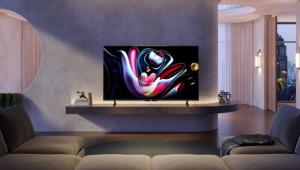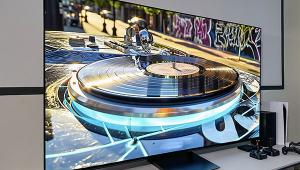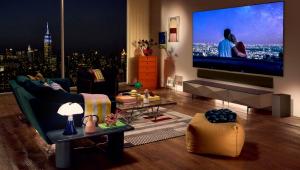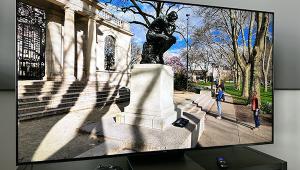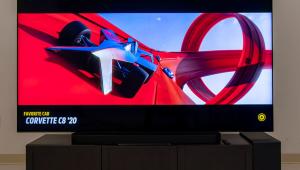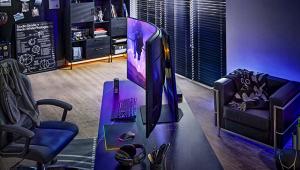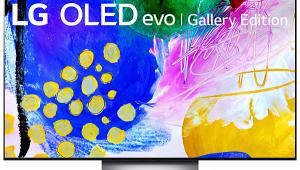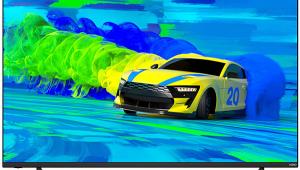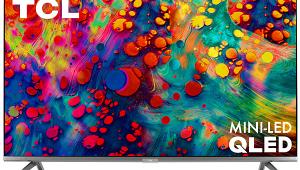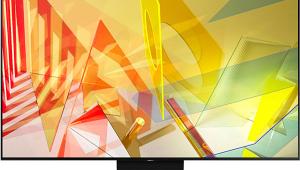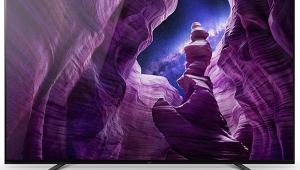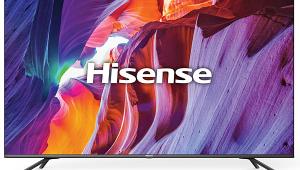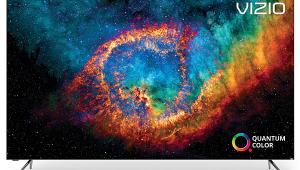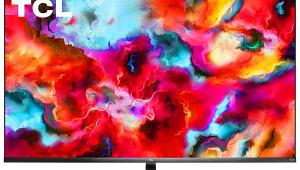Still, a great option for those seeking in Arlington a big-screen experience without breaking the bank.
Vizio M658-G1 M-Series Quantum LCD Ultra HDTV Review Page 2
While it's no substitute for a good surround system or even a quality soundbar, I found the Vizio's built-in audio quite listenable at reasonable volume levels. With its Surround option selected, it produced a soundstage that was unmistakably wider than the set itself, extending to the sides and even to the back of the listener. This was subtle by any standard and will likely vary with the room and seating position, but it was definitely a step up from typical TV sound. Despite some voice coloration and a lack of serious bass, there was a good overall balance with no undue harshness.
 To Calibrate or Not to Calibrate
To Calibrate or Not to Calibrate
Calibration is a real consideration for a $1,000 TV, since that service could deduct $200 or more (perhaps a lot more) from your wallet—a significant percentage of the set's price. My first impulse was not to do so and simply review the M658-G1 as delivered. But there's no way for us to know the consistency of any set from sample to sample, so I did perform full SDR and HDR10 calibrations. Without a direct A/B comparison (impossible given the way the set's Color Tuner and Picture Mode settings are interrelated, as described earlier), visual differences pre- and post-calibration were difficult to pin down precisely, but they were smaller than the measured results.
I ultimately did most of my viewing with the Vizio calibrated (2-step white balance for HD/SDR, 2-step white balance plus CMS adjustments for UHD/HDR10). The following observations were of the calibrated set with one exception: I didn't calibrate for Dolby Vision, which I watched in either the default settings or with subjective modifications. All of my serious viewing was from Blu-rays (HD and UHD) played on an Oppo UDP-203 Ultra HD Blu-ray player, but I also spent considerable time watching streamed programs.
HD and Standard Dynamic Range Performance
Master and Commander: The Far Side of the World begins circa 1805 as a night watchman wanders below deck on the British frigate Surprise, checking to confirm in the gloomy darkness that all is well. The Vizio proved just a hair short of delivering ultimate shadow detail here, but with its solid blacks was still effective. In a darkened room, the letterbox bars in this (and other) widescreen films weren't totally black, nor did the screen go to total black on fades between scenes (both true observations with HDR material as well), but I never found this distracting. And while this maritime tale offered up mostly the brownish hues of a warship at sea, both skin tones and the green foliage in a brief stop at the Canary Islands always looked right.
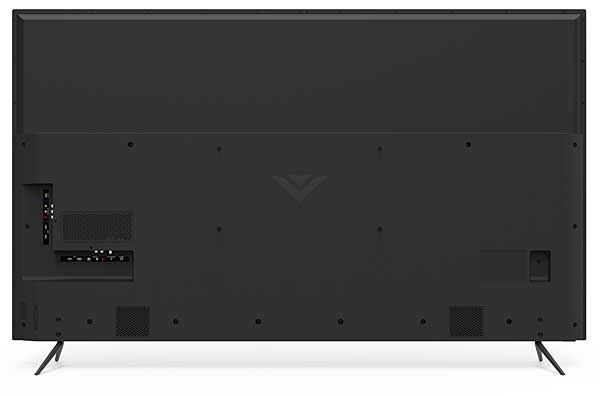
The science fiction/action film Edge of Tomorrow has a similar monotone look, but again the colors that were present always looked realistic. Detail here was crisp but not overdone, and again the skin tones were true to life (with allowances for the creative decisions made by the filmmakers).
A Knight's Tale, though an oddity of a movie, is extremely well photographed, and presents a more detailed picture in many respects than the above two examples. That detail came through clearly on the Vizio, and the image was far more colorful, with hues of every description appearing in the period costumes and abundant medieval jousting scenes.
Ultimately, I couldn't find serious fault with the Vizio's HD performance on a wide range of program material, viewed either on disc or via streaming services. I watched some exceptional examples of the latter on Netflix, such as Charité, Charité at War, The Last Czars, and The Crown (the latter in 4K/SDR). The Vizio's color and resolution were consistently good, and its full array local dimming effective, with only occasional visible blooming mainly on bright white titles against a pure black background—something we see on nearly all full array local dimming sets, even far more expensive models. The screen showed no obvious discoloration or streaking, and I only spotted a trace of posterization (color banding) once during hours of viewing.
Ultra HD and High Dynamic Range Performance
As much fun as I had watching standard HD on the Vizio, Ultra HD/HDR was yet another step up. As you'll read in the Test Bench, this set has by far the lowest HDR peak luminance I've yet measured on a flat-panel set—just under 440 nits. Even OLEDs can approach or exceed 600 nits. But the eye fortunately responds to light in a non-linear manner. For example, a pricier set that delivers a peak luminance of 1,500 nits will certainly provide more pop in bright highlights than this M-Series Quantum set when viewed side-by-side, but the difference those numbers might suggest aren't as great as you'd think. I suspect even the most jaded TV viewer will be impressed by what the M-Series Quantum brings to the HDR party.
I sampled a wide range of HDR (HDR10) source material and it was uniformly rewarding. The brilliant colors on the animated Trolls jumped off the screen. The same held true for The Great Wall, the reds and greens of the army uniforms billowing brilliantly in the sun (luckily, no one told them "No Capes!").
I've often used the WWII drama Allied as test material because it offers ample HDR, good color, and enough leisurely-paced drama to allow for the sort of studied analysis that hyperactive films make difficult. It's also beautifully shot, with only modest use of CGI or other modern cinematic trickery. The oppressive brightness in shots of the Sahara desert that open the film were vividly realized by the Vizio, followed by a dark but busy street in Casablanca with believable darkness illuminated by effective but not unrealistically bright signs and streetlights. A later rooftop scene had good shadow detail, though a subtle trace of clouds in the otherwise black sky that I've spotted in this scene on other displays (mostly expensive OLEDs) was invisible on the Vizio.
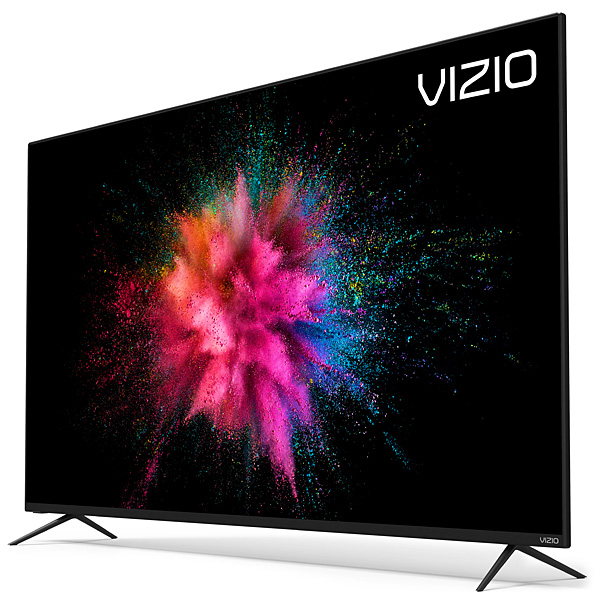
As mentioned earlier, I didn't calibrate the M658-G1 for Dolby Vision HDR. Nevertheless, it did look impressive in its factory default settings with Dolby Vision HDR sources on Netflix such as Stranger Things, Lost in Space, and The Umbrella Academy (all viewed via the set's internal streaming app). I sometimes dialed in a gamma change depending on the source and room lighting (HDR typically looks best in a dark room) but otherwise obtained good results without making tweaks.
Dolby Vision on Ultra HD Blu-ray disc was a different story. In this case, the default factory settings looked too dark and red, particularly on faces and in dimly lit scenes. This should also be true for any Dolby Vision programs arriving from an external source such as a Roku or Apple TV box. Changing the Dolby Vision default settings helped (I used Backlight 50-51, Brightness 52, Contrast 60-70, Color 40-43, and Gamma 2.2), but a separate Dolby Vision calibration should offer a better result—though that extra step will add to the cost of a professional calibration. Or you could use an Ultra HD player that lacks Dolby Vision, which will then play only the Dolby Vision source's HDR10 base-layer. I tried this with an older Samsung player, and the result looked better than the uncalibrated, disc-based Dolby Vision, the latter either with or without the above suggested picture setting changes.
Conclusion
You can find Ultra HD sets with greater HDR pop than Vizio's M658-G1. You'll also find ones that deliver better blacks on the most challenging movies, better performance in their default settings, and features like dynamic tone mapping that the M658-G1 doesn't offer. But those sets will undoubtedly cost more—lots more in some cases. And yes, you can also buy 65-inch Ultra HDTVs for even less than this one in the aisles of your local Walmart. But can you buy equivalent performance for less than the Vizio M658-G1's $1,000 price? I seriously doubt it.
- Log in or register to post comments


Olá, a TV é uma bomba, estou a transmitir o jogo no site online - mostbetpt.casino, e tudo funciona muito bem, aliás, este site tem um aspeto fantástico, por isso pode experimentá-lo, avaliar os seus jogos por si próprio e escolher os que mais gosta,Achei muitas delas muito interessantes!

Greetings! My love for sports and gambling has found the perfect combination on the Mostbet website. Here reviw website you can find everything you need for a comfortable game: from a large selection of sporting events to a variety of casino games. The site's interface is very user-friendly, and the betting process is simplified as much as possible. What I especially like is the speed with which you can get winnings. The platform offers many bonuses and promotions, which makes the game even more interesting. I recommend Mostbet to anyone who appreciates quality and reliability in betting!

What I like most about the Pakistani site https://mostbet-pk.club/ is their approach to honesty and transparency. All games here are fair, and the results are based on a random number generator. In addition, they publish information on RTP (return to player), which allows you to understand what the chances of winning are. This increases the credibility of the site and allows you to play calmly, knowing that your winnings really depend on luck, and not on any hidden mechanisms.

